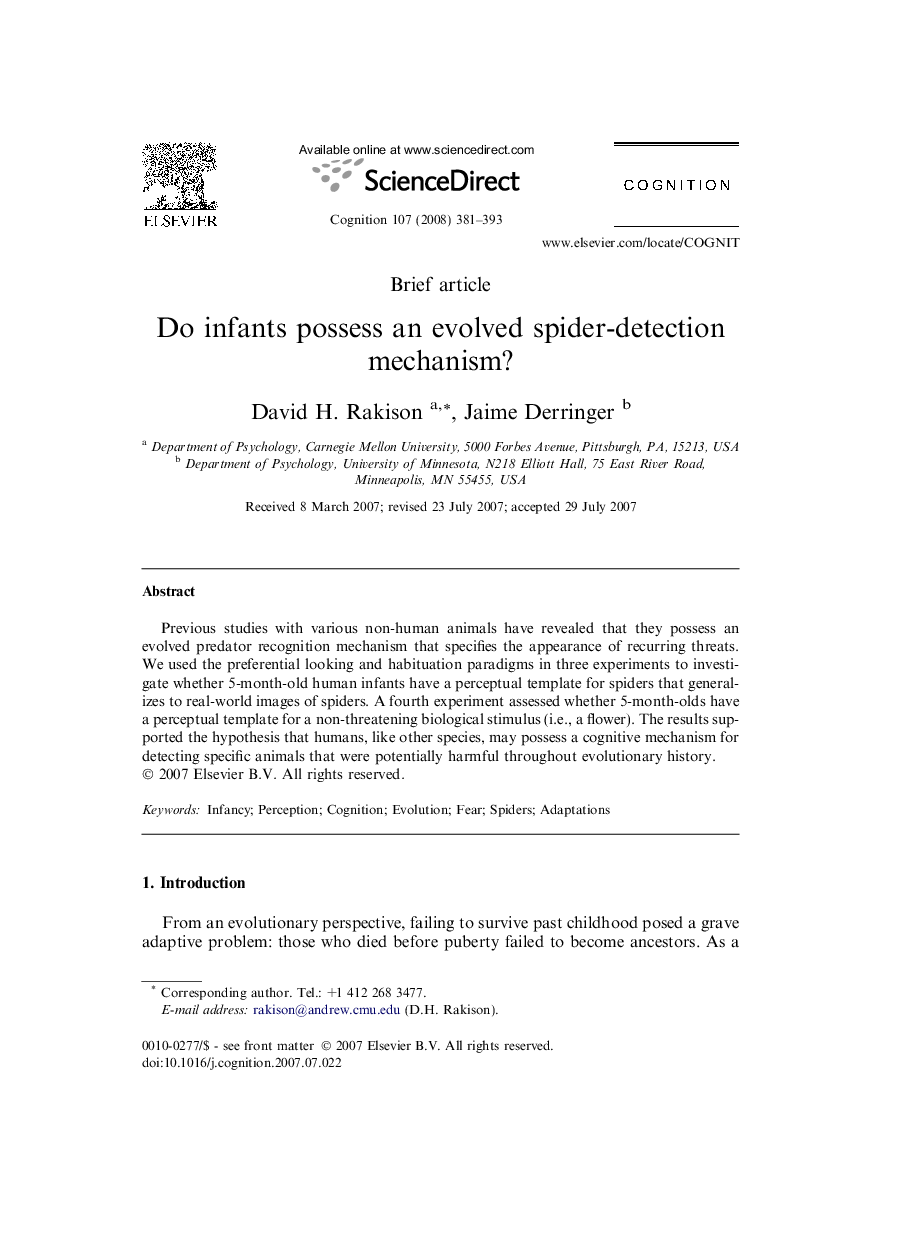| Article ID | Journal | Published Year | Pages | File Type |
|---|---|---|---|---|
| 927353 | Cognition | 2008 | 13 Pages |
Abstract
Previous studies with various non-human animals have revealed that they possess an evolved predator recognition mechanism that specifies the appearance of recurring threats. We used the preferential looking and habituation paradigms in three experiments to investigate whether 5-month-old human infants have a perceptual template for spiders that generalizes to real-world images of spiders. A fourth experiment assessed whether 5-month-olds have a perceptual template for a non-threatening biological stimulus (i.e., a flower). The results supported the hypothesis that humans, like other species, may possess a cognitive mechanism for detecting specific animals that were potentially harmful throughout evolutionary history.
Related Topics
Life Sciences
Neuroscience
Cognitive Neuroscience
Authors
David H. Rakison, Jaime Derringer,
